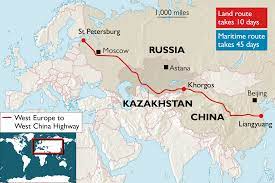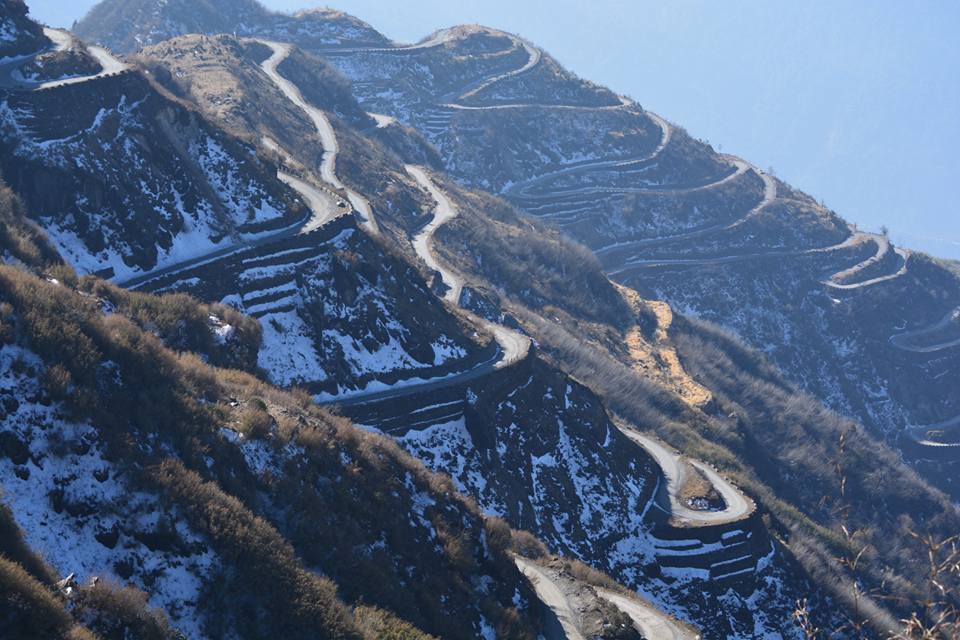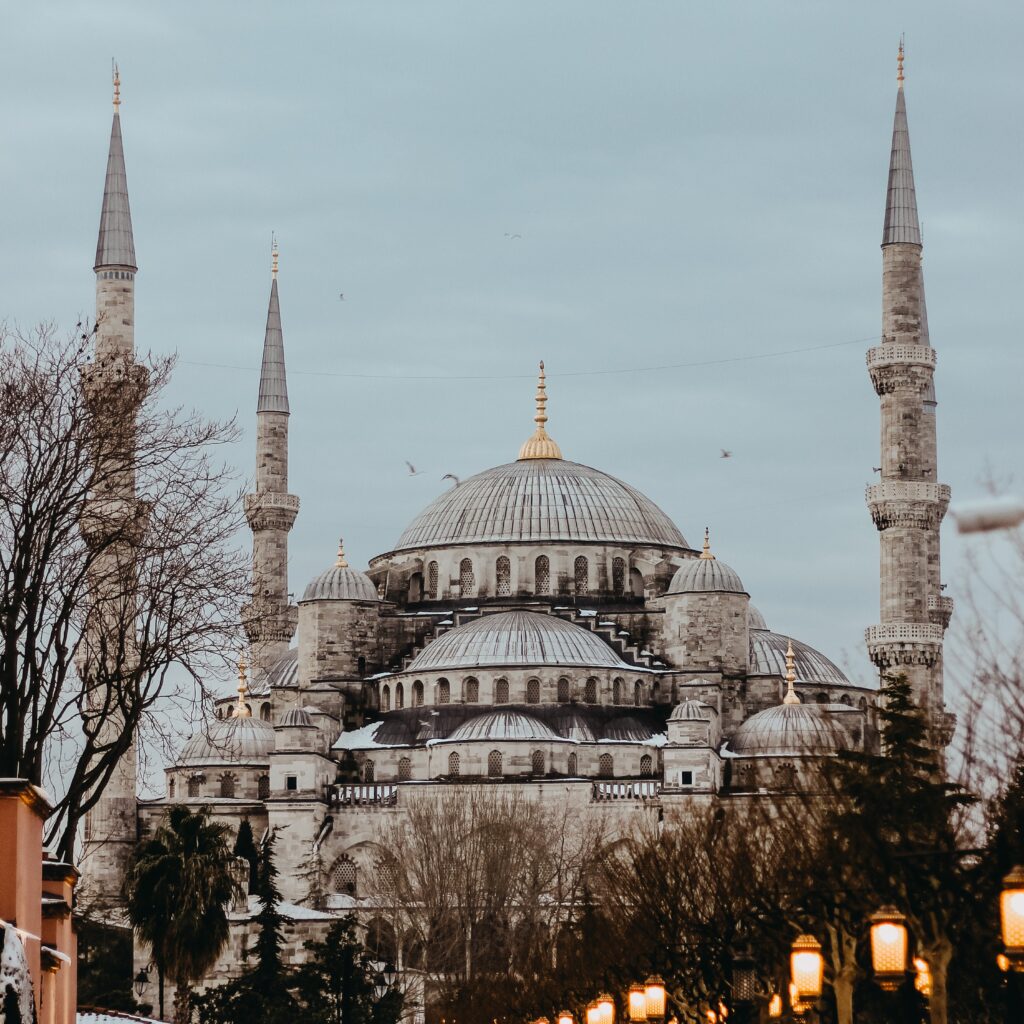Discovering its Economic, Cultural, and Religious Significance
Silk Road:
A Historic Trail of Trade and Culture
For centuries, the Silk Road served as the world’s greatest trade route, connecting Asia to Europe and Africa. This ancient network of trade routes, spanning over 7,000 miles, allowed merchants, traders, and travelers to exchange goods, ideas, and cultures and played a significant role in shaping the world we know today.
In this article, we’ll delve into the history, significance, and cultural legacy of the Silk Road.
A Journey Through the 7000 miles long Silk Road:
Discovering its Economic, Cultural, and Religious Significance
The History of the Silk Road

The Silk Road was not a single road but a network of routes that spanned from Chang’an, the capital of China, to the Mediterranean Sea. It took its name from the lucrative Chinese silk trade, which was the backbone of the road. However, the route was used for more than just the silk trade. The Silk Road was a melting pot of different cultures and religions, which resulted in a unique blend of traditions and lifestyles.
The Silk Road connected the East and West for over two thousand years. It facilitated trade between China and the Mediterranean region, connecting diverse peoples and cultures along the way. The Chinese exported silk, porcelain, tea, and other luxury goods, while the West provided gold, silver, precious stones, and other commodities.
The Silk Road also allowed for the exchange of knowledge, ideas, and technology. Buddhism, Islam, and Christianity were among the religions that spread along the Silk Road, along with knowledge of mathematics, astronomy, and medicine. The Chinese invention of paper and printing technologies, as well as gunpowder, eventually reached Europe via the Silk Road.
The Significance of the Silk Road
The Silk Road served as a conduit for ideas and cultural exchange between East and West. It created a cultural bridge between the ancient empires of Rome, China, and India, and played a significant role in the development of the modern world.
The Silk Road also fostered the exchange of goods, such as spices, textiles, and precious metals, which had a profound impact on the economies of the regions it connected. It facilitated trade between China, India, Central Asia, the Middle East, and Europe, leading to the development of a global economy that still exists today.
The Cultural Legacy of the Silk Road
The Silk Road’s legacy is evident in the culture and traditions of the regions it connected. The art, music, cuisine, and fashion of the Silk Road were influenced by the diverse peoples and cultures it connected.
One example is the development of the Silk Road fashion, which was influenced by the garments worn by travelers along the route. The use of vibrant colors, luxurious fabrics, and intricate embroidery can still be seen in traditional garments of the regions along the Silk Road.
Another example is the spread of Buddhism along the Silk Road, which led to the development of unique art styles that blended Indian, Greek, and Chinese traditions. Buddhist art and architecture, such as the Mogao Caves in Dunhuang, China, are a testament to the cultural exchange facilitated by the Silk Road.
The Origins of the Silk Road
The Silk Road, known as the “Silk Route” or “Silk Way,” was an extensive network of trade routes that spanned Asia, Europe, and Africa. The Silk Road was established during the Han Dynasty in China, around 206 BC, and lasted for over 1,000 years until its decline in the 14th century.
The term “The Silk Road” was coined by German geographer and historian Ferdinand von Richthofen in 1877.

The Development of the Silk Road Network
The Silk Road network was established by traders who sought to capitalize on the vast wealth of the East, including silk, spices, tea, and porcelain, and to trade them for Western goods, such as gold, silver, glass, and wool. The trade routes that comprised the Silk Road network extended over 7,000 miles and connected various regions of Asia, including China, India, Persia, and the Mediterranean. The routes were established by caravans of camels, horses, and donkeys that carried goods across the treacherous terrain of the Gobi Desert, the Pamir Mountains, and the Taklamakan Desert.
The Silk Road During the Han Dynasty

During the Han Dynasty in China, the Silk Road was primarily used to transport silk to other parts of Asia and the Mediterranean. The Chinese government maintained a monopoly on the production of silk, which they exported to India, Persia, and Rome. In return, the Chinese received gold, silver, and other luxury goods. The Silk Road was also instrumental in the spread of Buddhism from India to China.
The Silk Road in the Medieval Era
During the medieval era, the Silk Road became more important as a result of the rise of Islamic empires, such as the Abbasid Caliphate and the Seljuk Empire, which controlled many of the trade routes. These empires played a crucial role in the exchange of goods and ideas between the East and the West. The Silk Road also played a vital role in the spread of paper-making technology, which originated in China and was introduced to the Arab world via the Silk Road.
The Decline of the Silk Road
The decline of the Silk Road can be attributed to several factors, including the rise of sea routes, such as the Indian Ocean Trade Network, which made trade by sea more efficient and profitable. Additionally, the Mongol Empire, which controlled much of the Silk Road in the 13th and 14th centuries, also contributed to the decline of the Silk Road by imposing high taxes on traders and discouraging trade. The decline of the Silk Road ultimately led to the rise of European trade and the Age of Exploration.
The Impact of the Silk Road on Trade
The Silk Road had a significant impact on trade, as it allowed for the exchange of goods and ideas between different regions of the world. The Silk Road played a crucial role in the development of trade in Central Asia, and it also facilitated the growth of trade between China and the Mediterranean. The Silk Road allowed for the exchange of goods such as silk, tea, spices, gold, silver, and textiles, which helped to create a global economy.
The Economic Significance of the Silk Road
The Silk Road had a significant impact on the economy of the regions it connected. The trade routes facilitated the exchange of goods and helped to establish markets in different parts of the world. The Silk Road also played a crucial role in the development of cities and urban centers, as traders established settlements along the routes. The trade routes also facilitated the exchange of technologies and ideas, which helped to stimulate innovation and growth in different parts of the world.
The Cultural Significance of the Silk Road
The Silk Road was not only important for trade and commerce but also for the exchange of cultures and ideas. The trade routes facilitated the exchange of art, music, literature, religion, and philosophy, which helped to create a rich and diverse cultural heritage. The Silk Road played a significant role in the development of Buddhism, which was introduced to China from India via the Silk Road. The exchange of ideas and knowledge facilitated by the Silk Road contributed to the growth of learning and scholarship in different parts of the world.
The Religious Significance of the Silk Road
The Silk Road also played a significant role in the spread of religions. The trade routes facilitated the exchange of religions, such as Buddhism, Islam, Christianity, and Judaism, which helped to create a rich and diverse religious heritage. The Silk Road played a crucial role in the spread of Buddhism from India to China, and it also helped to spread Islam from Arabia to Central Asia and China. The Silk Road was also instrumental in the spread of Christianity, which was introduced to China via the Silk Road.



About The Silk Road in Pakistan read this “Discover-the-natural-wonders-of-Pakistan-2023/
Conclusion
The Silk Road was an extensive network of trade routes that played a significant role in the exchange of goods, ideas, and cultures between different regions of the world. The Silk Road was instrumental in the development of trade, commerce, and markets, and it also facilitated the exchange of technologies, knowledge, and ideas, which helped to stimulate innovation and growth in different parts of the world. The Silk Road also played a crucial role in the spread of religions, such as Buddhism, Islam, Christianity, and Judaism, and it helped to create a rich and diverse cultural heritage. The legacy of the Silk Road continues to be felt today, as it remains a symbol of the connections between different cultures and civilizations.
The Silk Road played a pivotal role in shaping the world we live in today. It facilitated the exchange of goods, ideas, and cultures, and created a cultural bridge between East and West. The Silk Road’s legacy is evident in the art, music, cuisine, and fashion of the regions it connected. The Silk Road was not just a trade route but a cultural phenomenon that left an indelible mark on human history.
You can also see more details about The silk route and some countries in Central Asia
Here are some potential outbound links that could be worth reading:
- UNESCO World Heritage Centre – Silk Roads: the Routes Network of Chang’an-Tianshan Corridor: This page provides information about the Silk Road’s designation as a UNESCO World Heritage site, and includes a map of the routes and other helpful resources.
- The British Museum – Silk Road: This page on the British Museum’s website offers an in-depth look at the history of the Silk Road, with articles, videos, and images exploring different aspects of the trade routes.
- The Silk Road Foundation: This non-profit organization is dedicated to the preservation and study of the Silk Road, and its website offers a wealth of information and resources about the trade routes and their legacy.
- The International Dunhuang Project: This project is a collaboration between institutions around the world, working to digitize and make available online manuscripts, paintings, and artifacts from the Silk Road region. Their website offers a vast collection of materials related to the Silk Road, including images, texts, and audio recordings.
- The Met Museum – The Silk Road: This page on the Metropolitan Museum of Art’s website provides a curated selection of artwork and artifacts from the Silk Road, along with informative articles and videos about the trade routes.


With this knowledge Arby s executed five times more remodels within a year Manager of Business Intelligence and Analytics Arby s Restaurant Group
Smoothie Bar Galgano Construction Corp
Top franchises worth investing in 2022 HoReCa services or niche retail How much money you need to open a franchise business Franchising is an easier way
Commercial Kitchen Design Consultants Mishhorecaservices – https://forum.ivd.ru/profile/449031-andrewlogginvv/?tab=field_core_pfield_11
не работает